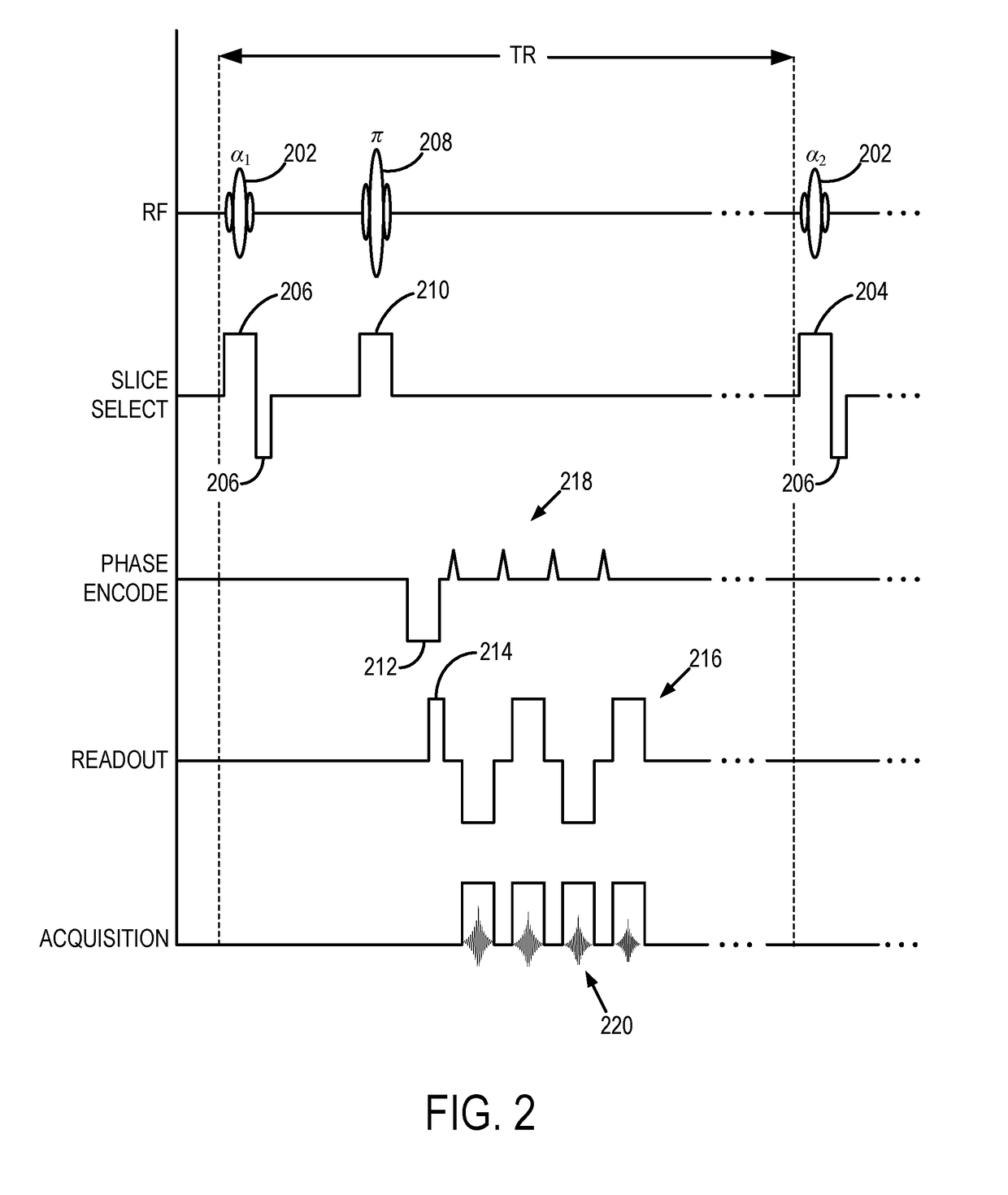Simultaneous dynamic contrast enhanced and dynamic susceptibility magnetic resonance imaging using magnetic resonance fingerprinting
a magnetic resonance imaging and dynamic susceptibility technology, applied in the direction of magnetic measurement, instruments, measurements using nmr, etc., can solve the problems of compromising renal function, prolonging the total scan time,
- Summary
- Abstract
- Description
- Claims
- Application Information
AI Technical Summary
Benefits of technology
Problems solved by technology
Method used
Image
Examples
Embodiment Construction
[0012]Described here are systems and methods for generating quantitative perfusion parameter maps based on multiple different relaxation parameter maps that are simultaneously produced from images acquired using contrast-enhanced magnetic resonance imaging (“MRI”) techniques.
[0013]Dynamic contrast-enhanced (“DCE”) MRI utilizes repeated imaging of a subject with a T1-weighted pulse sequence to measure changes in magnetic resonance signal intensity as a bolus of contrast agent diffuses or perfuses into the tissues being imaged. Example contrast agents include those containing gadolinium or other paramagnetic materials. Contrast agent concentration curves (e.g., the arterial input function, or AIF) in plasma can be computed from these images, in addition to a measurement of the contrast agent accumulation in the tissue over time. From these data, quantitative parameters can be computed using pharmacokinetic modeling. Examples of quantitative parameters that can be generated using pharm...
PUM
 Login to View More
Login to View More Abstract
Description
Claims
Application Information
 Login to View More
Login to View More - R&D
- Intellectual Property
- Life Sciences
- Materials
- Tech Scout
- Unparalleled Data Quality
- Higher Quality Content
- 60% Fewer Hallucinations
Browse by: Latest US Patents, China's latest patents, Technical Efficacy Thesaurus, Application Domain, Technology Topic, Popular Technical Reports.
© 2025 PatSnap. All rights reserved.Legal|Privacy policy|Modern Slavery Act Transparency Statement|Sitemap|About US| Contact US: help@patsnap.com



